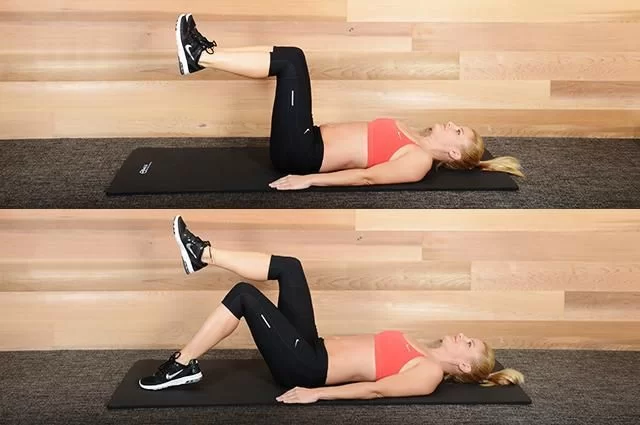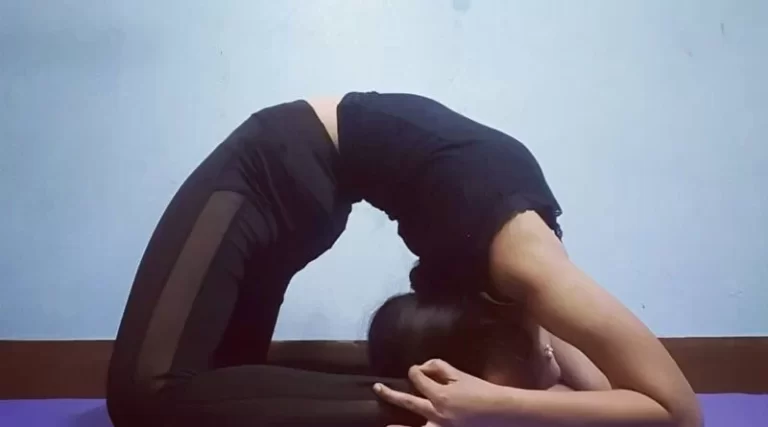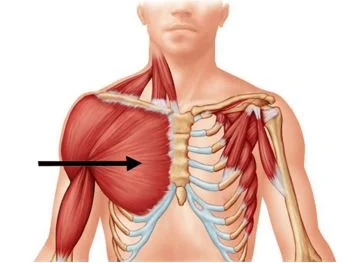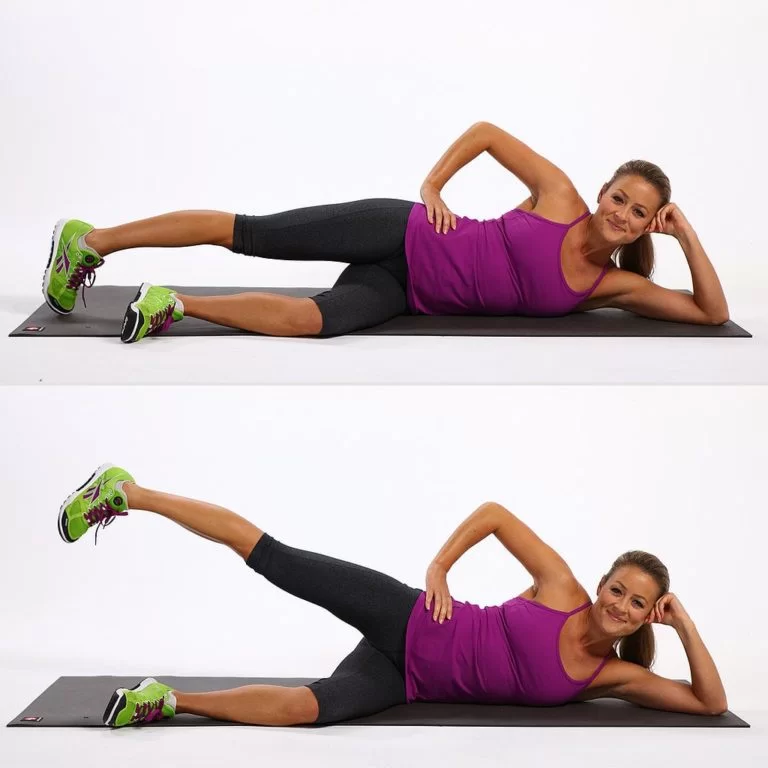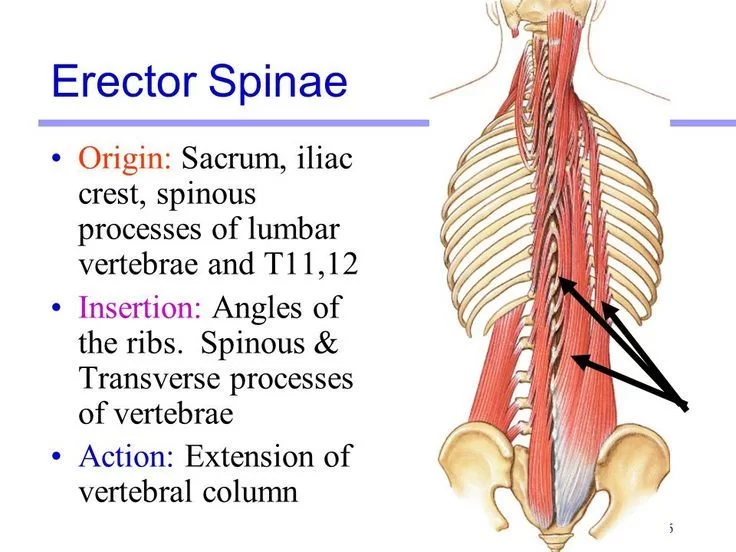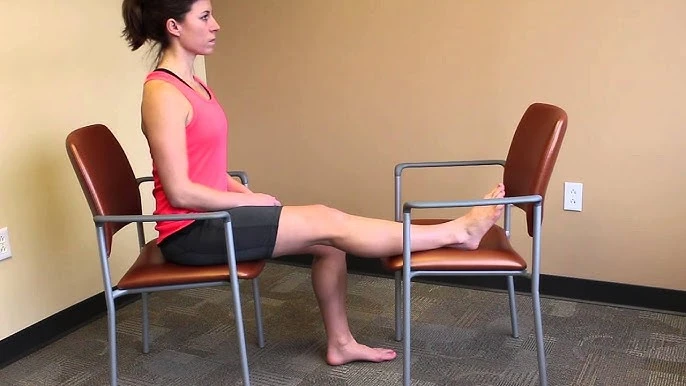Chest Exercises for a Strong and Functional Upper Body
What is chest muscle strengthening exercise?
Chest exercise- muscle strengthening is very important because it enhances arm movement and also improves your breathing. stronger chest muscles are important to make your daily living activities easier and maintain your breathing pattern.
The chest muscles could be considered the main part of strength anatomy. chest muscles are involved in actions such as squeezing a set of loppers to cut a tree branch and pushing a door open. chest muscles are also the primary muscles referenced when debating upper limb strength.
For bodybuilders and for those who interested in general muscular aesthetics,your chest muscles are the defining part of muscle mass. Powerlifters rely on them for the bench press to score the highest lift.But these muscles are also incredibly important from a functional standpoint because they support the movement of the hands.
When it comes to strengthening the muscle, guys are often most fixated on what they can see directly in front of them in the mirror. That starts with a strong, broad chest—whether you are filling out the top of a t-shirt or taking it off, a well-developed chest is likely the very first muscle group that comes into your focus when you look at yourself or someone else. The chest muscle group is key for the V-taper shape commonly desired by bodybuilders, and it takes up some major real estate on your trunk that you should not just ignore. While we hope that you will eventually balance out your workouts by training your legs and blasting your back muscles, the chest is a great part to start.Strengthening your chest muscles properly is more complicated than just stacking plates on the barbell to push through the heaviest possible bench press.
3 primary muscles make up the chest:
- pectoralis major muscle
- pectoralis minor
- serratus anterior
The pectoralis major is broad, as the name implies, and is superior (or located above) to the pectoralis minor, which is smaller and located below the pectoralis major. The pectoralis major is tasked with adduction of the arm (movement toward the body) and rotation of the arm forward, along with assisting other muscles in pulling the torso up when your arms are above your head. The pectoralis minor helps to move your ribs and shoulders. The pectoralis major is made up of two heads — the clavicular head and the sternocostal head. These are antagonistic to each other, which means when one is contracts, the other relaxes.
The clavicular head of the pectoralis major flexes the humerus, or upper arm bone, by raising your arm anterior to you. It also adducts the humerus — which means it brings the arm inward toward the body’s midline — and assists in the internal rotation of the same bone.
The sternocostal head brings the arm down from a forward or flexed position. It is also involved in movements such as horizontal adduction (as if you were bear-hugging someone) and internal rotation of the humerus.
The pectoralis minor’s work is to stabilize the shoulder blade by pulling it down and forward against the rib. this movement is known as the protraction of the shoulder blade. It is also done with shoulder stability and respiration.
The serratus anterior and subclavius are also chest muscles.it will rotate the scapula and depresses the clavicle, respectively.A lesser-known muscle in the chest is called the subclavius. It is a very smaller accessory muscle it primarily works in respiration.
The serratus anterior has a sawlike origination on the outside anterior of the first through 8th ribs and ends on the middle border of the shoulder blade (closest to the spine). It pulls the shoulder blade around the ribs to prevent scapular winging, providing stability to the shoulder during a time of pushing movements.
Health benefits by strengthening your chest muscles.
- In addition to your back and shoulder muscles, your pectoralis help to stabilize your shoulder joint.
- Better Breathing: In addition to improving your posture, strengthening and lengthening chest muscles helps to support your breathing pattern. That is because the pectoralis is attached to your rib cage, which expands with every inhale.
- A strong chest also increases the strength of your back muscles.
- The chest muscles keep you upright and ensure good posture.
- Targets your pectorals, deltoids, and triceps, building muscle tissue and strength.
- It also works your serratus anterior and biceps. These upper limb muscles’ strength
- Help with activities of daily living like pushing strollers, shopping carts, and heavy doors.
How to Train Your Chest Muscles?
You can train your chest muscles at home or in a gym. in a pinch with body weight moves like pushup variations, feature chest-ecentric movements in broader full-body workouts to spread the workload, and if you feel like you are lagging, even ramp up the volume beyond the Monday standard with multiple sessions dedicated to chest in a week.
There has a whole treasure trove full of workouts and exercises to be uncovered to blast the chest that can sculpt your pectoralis and push your upper limb training days to the next level. Just remember, if you aim to build chest muscle, you should aim to work using the proper protocols for hypertrophy, with the most efficient repetitions schemes and rest periods. Likewise, you will need to be eating right to gain muscle.
Here we explain some of the best chest exercises to do just that. Choose three or four to work into your routine, and for best outcomes, rotate in new movements every 4 or 5 weeks. Just remember, there has nothing wrong with a big bench for your chest—as long as your workout does not begin and end there.
Different types exercises to strengthen your chest muscles:
Incline push up
How to do it?
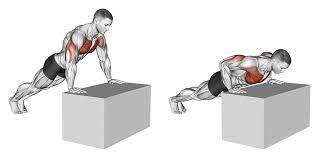
- This is a good exercise to warm up your chest muscles for work.
- For this exercise, you have to begin with your hands on the wall or a countertop height surface. move your feet back so that your body makes roughly a 45-50 degree angle with the ground.
- Your body should be straight and your spine should be neutral, and lower your chest to the surface you are leaning against.
- Hold for a two seconds, then return to the beginning position.
- Make sure the resistance feels light enough to complete up to 25 reps. If you need to make this exercise easier, step closer to your hands to make this exercise tough, step farther away.
Flat bench press
How to do it?
- For a flat bench press, you need a barbell or dumbbells, a flat bench.
- Take a supine lying position on the bench with your knees flexed and feet flat on the ground. hold the barbell, with your thumb wrapped around the barbell or dumbbells and palms facing toward your feet. Press your arms straight toward the ceiling to raise the bar off the rack.
- Move the barbell over chest level.
- Flexed your elbows down at a 45-50 degree angle, slowly lower the barbell to your chest. Keep the barbell approximately in line with your fourth intercostal space.
- Pause for a moment, then press the barbell back to the starting position.
- Complete 2 sets of 10–15 repetitions.
your back should be flat and maintain good control of the weight. Also, keep your neck neutral to avoid excessive strain. It is recommended to enlist the help of a spotter to ensure safety in this exercise.
Incline bench press
How to do it?
For an Incline bench press, you need a barbell or dumbbell, incline bench.
- Lie on your back on the incline bench with your knees flexed and feet flat on the ground. hold the dumbbells, with your thumb wrapped around the dumbbells and palms facing toward your feet. Press your arms straight toward the sky to lift the barbell off the rack.
- Slowly lower the dumbbells down to your chest, approximately in line with your mid-chest to just above your 4th intercostal space.
- Pause, then press the weight back to the initial position.
- Complete 3 sets of 10–14 repetitions.
Decline bench press
How to do it?
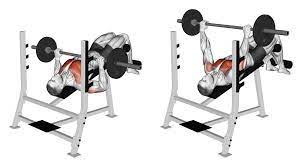
- For the decline bench press, you need a barbell or dumbbells, decline bench
- Takes a supine lying position on decline bench, with your knees flexed and ankles secured behind the ankle rests.hold the bar, with your thumb wrapped around the barbell and palms facing toward the feet. Press your arms straight to lift the barbell off the rack.
- Position the barbell above your lower chest to the upper abdomen region.
- Slowly flexed your elbows to lower the barbell down to your chest, approximately in line with your nipples.
- Pause, then press the barbell back to the initial position.
- Complete 3 sets of 10–12 repetitions.
Pushup

How to do it?
- Start on your hands and knees, and step back into a high plank position. keep your hands wider than your shoulders, and your legs should be straight with your quadriceps. Your hamstrings should be engaged and your spine should be neutral.
- Your core muscles should be tight, flexed your elbows up to a 45-50 degree angle to lower your chest toward the ground, maintaining a straight line from head to heel.
- our goal is to go as low as you can without losing the support of your core muscles or the alignment of your spine and pelvis.
- Press your chest away from the floor until your elbows are extended.
- Repeat, completing 10–15 repetitions. Do 2 to 3 sets.
If you want to make this exercise challenging, then you can do a decline pushup by placing your toes on an elevated surface such as a bench or table.
Cable crossover
How to do it?
- For this exercise, you will need a cable machine or a resistance band.
- For this exercise, you have to stand away from a set of a high pulley cable machine or a resistance band anchored overhead. Select light to moderate weight to add some challenge but give you proper form.
- Hold the ends of the band as you step forward with one foot. Create enough tension and control on the handles to keep them in front of your body.
- Engage your chest muscles and bring the handles down and forward across your body at roughly up to the umbilicus. The hands can cross to add emphasis to the serratus anterior muscles.
- Hold for two to three seconds and then slowly return to the starting position. Then repeat.
- Do 2 sets of 16–20 repetitions.
Chest dip
How to do it?
- You need a dip station.
- For this exercise you have to stand with the two parallel barbells and hold them, palms facing in.
- Extend your elbows and press into your hands, lifting your body so that it is in line with your hands.
- Then, flex your elbows and lower the weight toward your hands.
- Hold for a second then press back to the starting position. Repeat.
- Do 3 sets of 8–16 repetitions.
Resistance band pullover
How to do it?
- For this exercise, you will need a resistance band to anchor it on some solid objects. Then, take a supine lying position with your head toward the anchor point. The band should be about 2–4 feet higher than your head.
- Hold the resistance band overhead so that there is slight tension on the resistance band. your thumbs pointing towards the ceilings and your palms facing away from each other.
- Your core muscles should be tight and elbows extended, pull the resistance band toward your hips. Slowly return to the initial position with control.
- Do 2 to 3 sets of 10–12 repetitions.
Chest Fly
How to do it?
- For this exercise, you have to Lie on your back on a flat bench, hold dumbbells in both hands. Press the dumbbells up above your chest, keeping them from touching, with your little fingers and turned slightly inward. keep full-body tension on the bench.
- Lower your arms down moving only from your shoulders, keeping a slight elbow flexion. Only go as deep as your shoulder movement allows. Squeeze your shoulder blades to raise the dumbbells back up to the initial position, and emphasize the squeeze in your chest at the top.
- Do 1 to 2 set of 10 to 15 repetitions
Dumbbell Floor Press
How to do it?
- Take your dumbbell press to the floor for a shoulder-safe chest pump. This is another excellent variation for building up your chest muscles with home workouts since all you will need are some weights and some space to spread out.
- Lie on your back on the ground hold a pair of dumbbells tightly. Keep your feet flat on the ground, driving with your heels and squeezing your glutes. Keep your elbows at a 45-50 degree angle relative to your trunk to keep your shoulder muscles safe.
- Press the weight up and squeeze your chest muscles at the top movement. Lower back the weight with control, allowing your elbows to rest briefly on the floor.
- Do 5 to 8 repetitions of 1 to 2 sets.
Band Chest Fly
How to do it?
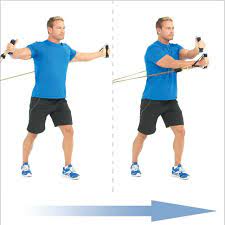
- For this exercise, you have to Attach two bands to a stable object, like a power rack or tower.
- Hold the ends of the resistance bands in both hands, wrapping around your palms. Take a staggered stance stand position in the middle of the station. Your arms should be outstretched but slightly flexed. Lean forward slightly at your hips and do not round your back.
- Without changing the bend in your arms, take your hands together.
- Slowly reverse the exercise, keeping the bands controlled.
- Do 1 to 2 set of 10 to 15 repetitions.
Batwing Fly
How to do it?
- For this exercise, you have to Sit on an incline bench holding dumbbells in both hands. Start with the dumbbells held with your hands at your pectoralis, as if you were preparing for a press.
- Keep your chest strong, with a natural arch in the back.
- Extend your arms out to both sides, maintaining your strong chest position.
- Pause for two seconds with your arms extended, stretching the muscles. Do 2 to 4 set of 8 to 12 repetitions.
Half-Kneeling Chest Press
How to do it?
- For this exercise, you have to Kneel with your right leg forward in front of a cable machine setup.
- Hold the cable with the same hand as the knee that is down on the floor. your core muscles should be tight and your left-knee straight, press the cable out in front of your chest.
- As you return your arm to the initial position, avoid turning with the cable by squeezing your core and stabilizing your hip against the floor. do 2 to 4 set of 10 to 12 repetitions.
Close-Grip Bench Press
How to do it?
- You can lift more weight with a barbell than with dumbbells because they are more stable. That is why barbell presses generally build more raw strength in your chest.
- But this variation puts more focus on your triceps, so you will get the bonus of extra work for the biggest muscles in your arms, too.
- Using an overhand grip that is a bit narrower than shoulder width, hold a barbell above your sternum with your arms straight.
- Lower the barbell to your chest. Hold for 1 to 2 seconds. Press the barbell up.Do 1 to 3 set of 6 to 10 repetitions.
Cable Fly
How to do it?
- When people think about pectoral or chest strengthening they only think about the press but adding fly in this workout adds some new stimulus to pecs and anterior deltoids.
- Fix two stirrup handles to the high-pulley cables of a cable-crossover station. hold a handle in both, and stand in a staggered stance in the middle of the station. keep your arms outstretched but slightly flexed. Lean forward slightly at your hips; do not round your back.
- Without changing the flex in your arms, move your hands together. Slowly do this exercise in reverse.
- Do 1 to 3 set of 6 to 10 repetitions.
Stance Change Kneeling Fly
How to do it?
- If you want to Target your lower chest then this is the best move. this exercise also works on your obliques. If you don’t have a cable machine then you can use a resistance band, wrap it on a stable object.
- For this exercise you have to Kneel in front of the resistance band’s anchor point, glutes and abdominals should be tight, left arm grasping the band, right foot on the floor. Keeping your hips and shoulders square to the front and a slight flex in your elbow, do a fly rep by pulling the band in front of you, wrist at about umbilicus height. pause for two seconds when you get to this position.
- Tighten your core and shift your right leg back so you are kneeling on both knees.
- Shift back to the initial position. Keep your hips and shoulders square to the front as you do this.
- Return the resistance band to the starting position.
- Do 1 to 3 set of 6 to 10 repetitions.
Plyometric Pushup

How to do it?
- This explosive pushup works on the fast-twitch muscles in your chest, priming them for growth.
- This movement also gives you another, more powerful option for at-home chest development.
- Begin with a pushup position, your hands just outside your chest, your feet shoulder-width apart, and your body forming a straight line from face to heels. Engage your core.
- Lower your chest to the ground and then press up explosively so your hands come off the ground.
- If you can pull it off, clap your hands together before returning to the initial position on the floor.
- Do 2 to 3 set of 8 to 10 repetitions.
Spider-Man Pushup
How to do it?
- Begin with a pushup position, abdominals and glutes tight. Lower into a pushup, bringing your chest an inch from the floor.
- Pause for a second in this position.
- Keeping your chest parallel to the floor, lift your left foot off the floor and drive your left knee to touch your left elbow.
- Drive back up as you return your left leg to the standard pushup position. Repeat on the other side.
- Do 2 to 4 sets of 6 to 8 repetitions.
Suspended Pushup
How to do it?
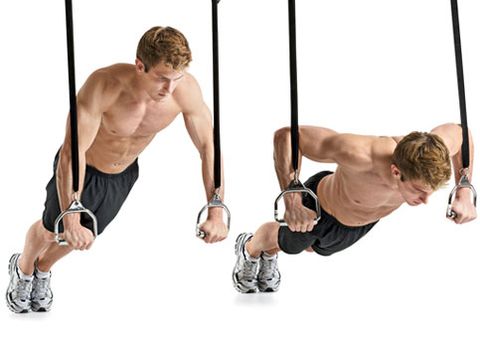
- Do pushups with your hands in an unstable suspension trainer utilize your core, chest, and stabilizer muscles harder than performing pushups on the ground. Using the TRX straps makes this another more accessible option for home workouts.
- Hold the handles of a TRX strap and straighten your arms in front of your chest.
- You have to stand with shoulder-hip width apart and your body anywhere from 45-50 degrees parallel from the ground. Your body should form a straight line from head to heels.
- Lower your chest toward the ground until your hands are just outside your shoulders. Keep your elbows in and keep your head in a neutral position as you lower the chest. Brace your core throughout the exercise.
- Do 2 sets of 6 to 10 repetitions.
Standing One-Arm Landmine Press
How to do it?
Most chest presses exercise to stress your shoulder muscles. This exercise nails your chest while increasing your shoulder mobility.
- Your shoulder blade moves with you as you press, it will put less strain on the joint.
- And because your core has to lock down to prevent your trunk from bending back or twisting, it also rocks your abdominals.
- Do this unique exercise by placing one end of a barbell securely into the corner, holding the opposite end with one arm. Stand with your feet shoulder-width apart, slightly flexed the knees while pushing your buttocks back.
- Initiate with your elbow by your side with your wrist up near your shoulder. Brace your core muscles and press your arm straight up and out toward the ceiling.
- Do 2 sets of 8 to 10 repettions.
Bear Plank Chest Press
How to do it?
- This exercise flips your chest day upside down, challenging your stability and torching your core. You will need a cable machine or a pair of resistance bands set on high anchor points.
- Initiate with bear plank position, bands set overhead or cable handles in your hands, core muscles should be braced. Keeping your hips and shoulders square to the floor and your back should be flat, shift one arm back towards your trunk. hold for a second.
- Then Press down to the floor, still keeping hips and shoulders square. Repeat this on another side.
- Do 3 sets of 8 to 10 repettions.
When did you not do these exercises?
- If your physician advised you to take a rest.
- If you are suffering from back pain then avoid weight lifting exercises.
- If you have a recent injury to the chest and shoulders.
- If you have breathlessness issues.
- If you feel any pain during these exercises then stop immediately and consult your therapist.

